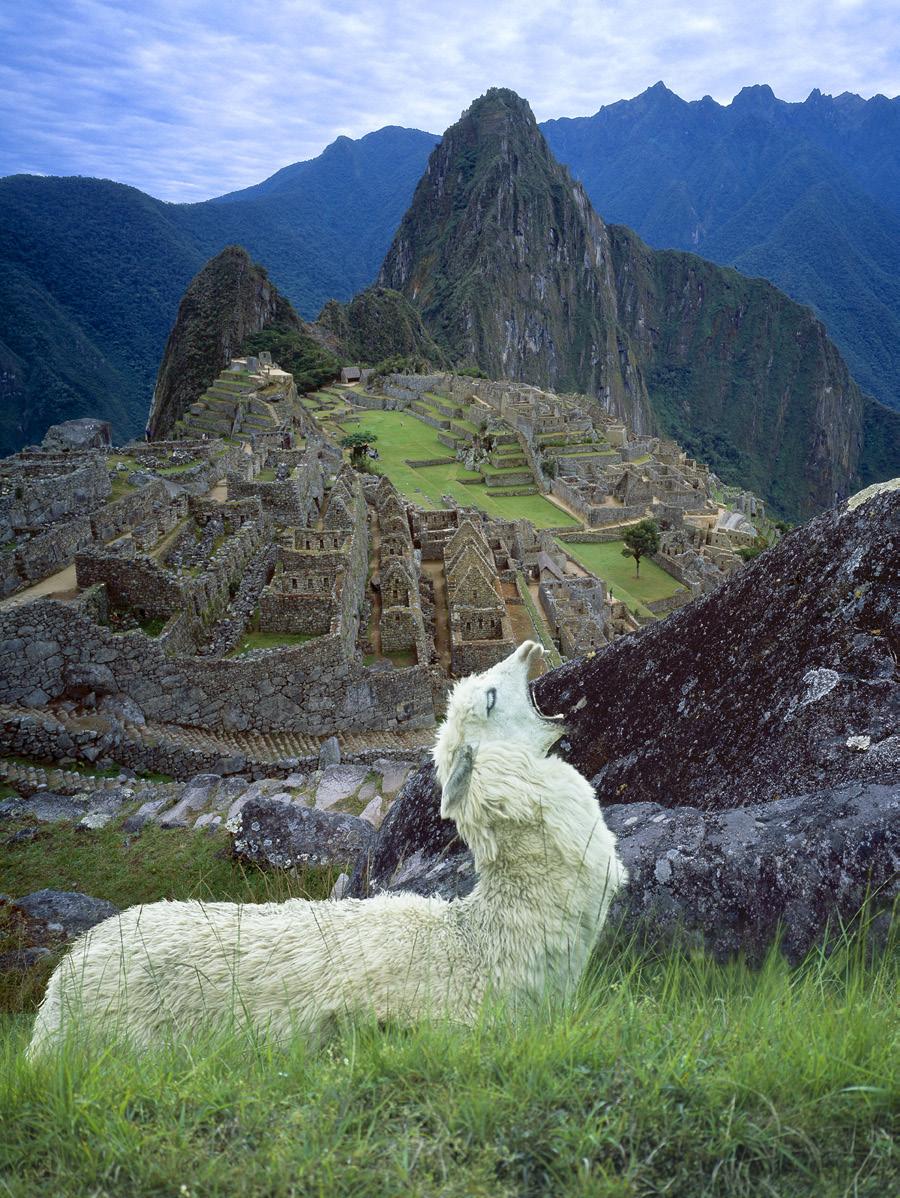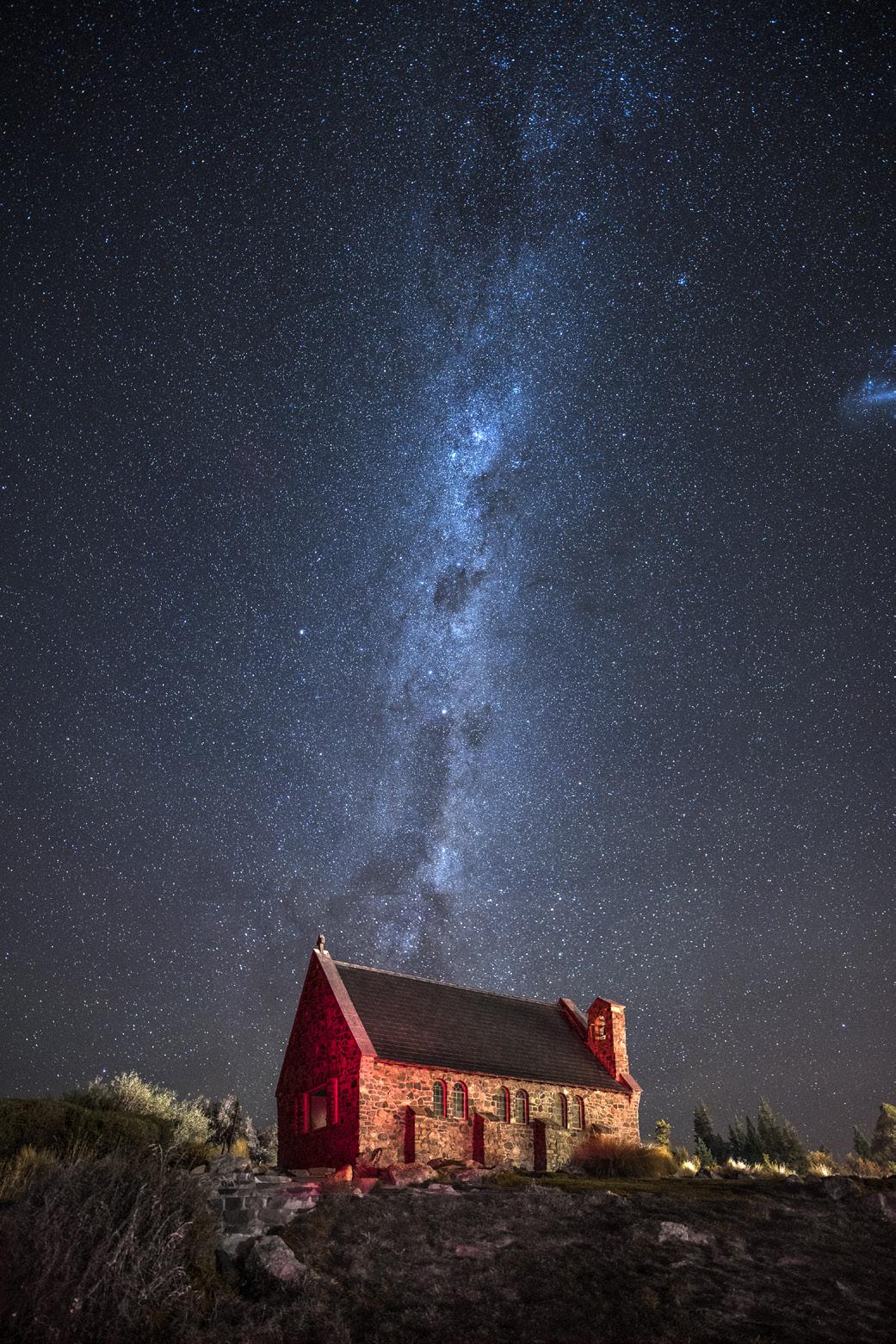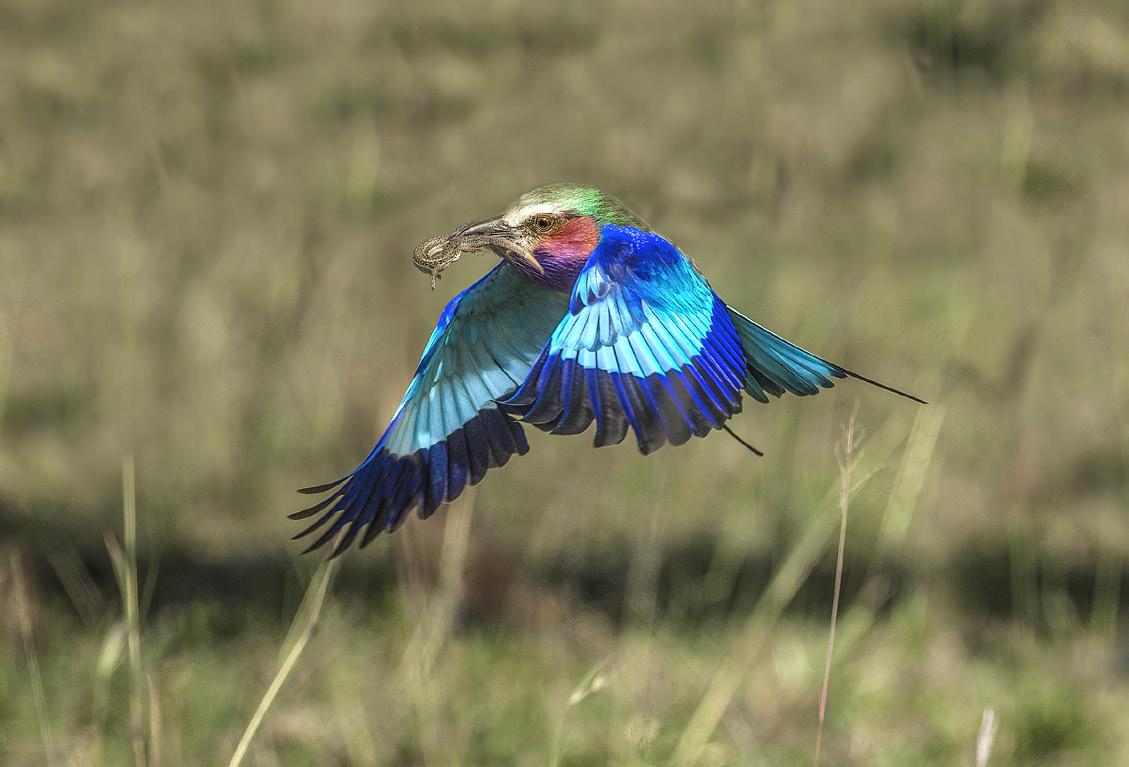
4 minute read
Capturing what you don’t see
How many times have you heard someone say when you look at their pictures, “You should have been there. I just couldn’t capture what I saw.” I’ve heard it many times, even from photographers who really know what they’re doing.
The truth is, cameras and lenses don’t capture what we see. They come close . . . sort of . . . and we accept that our photographs represent reality. But do they? Is reality what we see or what we photograph? They aren’t the same in many, many instances. Consider the following photographic scenarios. 1. With our eyes, we never, ever see out of focus backgrounds. I took the picture below of a lilac breasted roller in South Africa with a Canon 500mm f/4 telephoto wide open, and the background landscape became completely out of focus. I didn’t see that as I was shooting. The reality was that everything in the composition was sharp, from the immediate foreground to the distant background.
No matter how attractive an out of focus foreground or background might be, it does not represent what you saw at the time of shooting. Shallow depth of field is a manmade construct
and it does not represent what we see with our eyes.
2. When we use wide angle lenses, the perspective is elongated. We don’t see this with our eyes. The picture below of the Natural History Museum in London exemplifies this. The foreground is disproportionately large compared to the background, and while this is, indeed, a very long room, the 14mm lens I used made it seem even longer.
3. Our eye-brain combination is much more sophisticated than digital sensors in holding detail in both the highlights and the shadows. I had a conversation with a German physicist a few years ago on a flight from Europe, and his field of study was the eye. After he gave me some numbers, I calculated the human eye has a dynamic range of 31 f/stops! Contrast isn’t a problem for us, but for a camera the abilty to discern detail throughout a contrasty scene is a challenge.
Midday sunlight, for example, doesn’t present a problem for people. We see detail clearly in the deep shadows as well as in the bright sunlight. Digital cameras (and film cameras in the past) add contrast to a scene. So much contrast, in
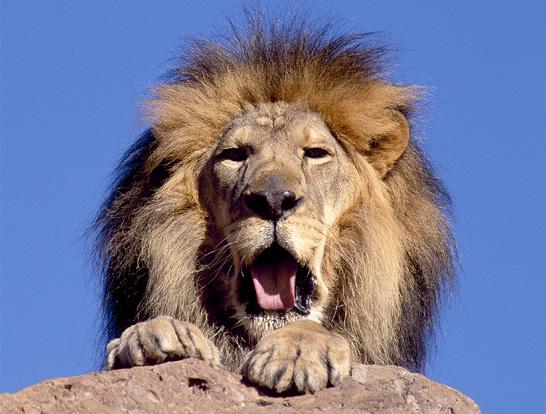
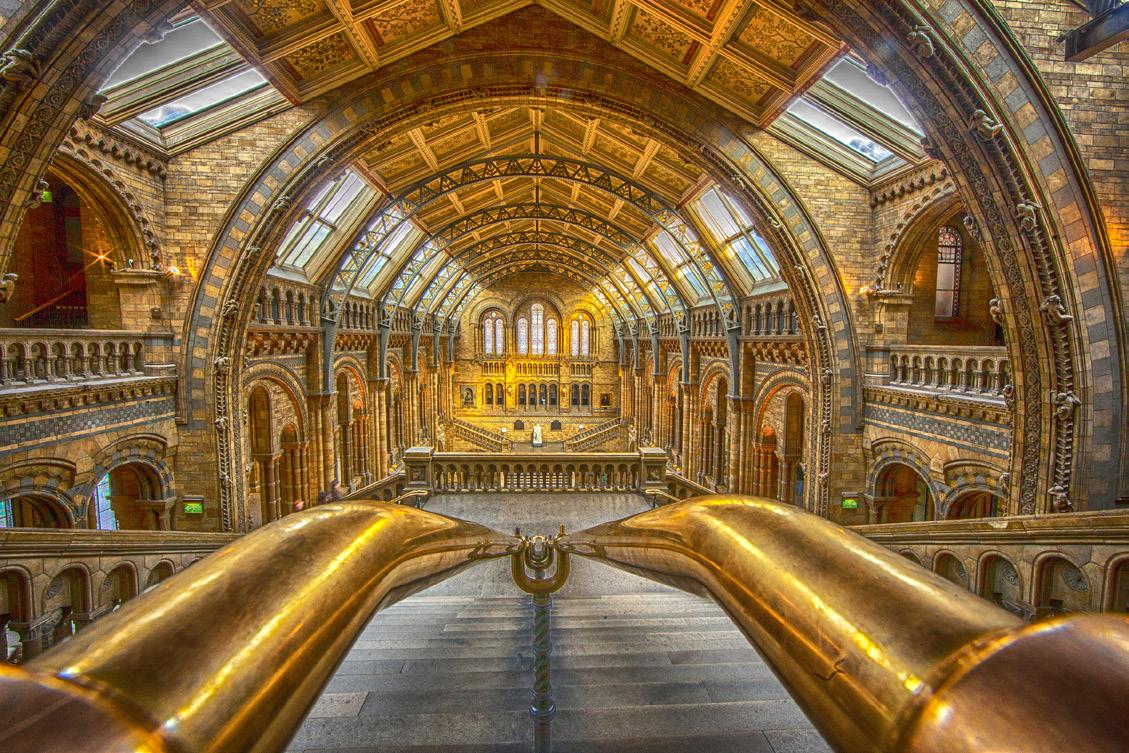
fact, that shadows can go black with no detail at all (as in the shot of the lion on page 7) and highlights can completely blow out -- i.e. they become solid white. The picture at right shows how the sky is blown out. The meter in the camera did a good job trying to balance the exposure between the shadows and the highlights, but you can see, due to contrast, the shadows are darker than they looked to my eyes and the sky is much brighter with a loss of detail compared to what I saw.
4. Because of the gain in contrast, when using flash it’s very easy to make the background go black. Black backgrounds are very dramatic, so in this case you are using the contrast gain in your favor instead of trying to find a workaround for it.
The photograph of the cecropia moth, below, is an example. I could see detail in the background with my eyes very clearly. Due to the flash-subject distance, the light fall-off from the flash -- and the contrast gain issue -- caused the background to become so underexposed it looks black. I didn’t see this with my eyes.
5. Another man-made construct that we never see and is, in fact, impossible to reproduce in our brain is motion blur. With long shutter speeds, we can blur moving water, traffic, birds in flight, a dancer’s twirling movements, and many other subjects. I photographed the
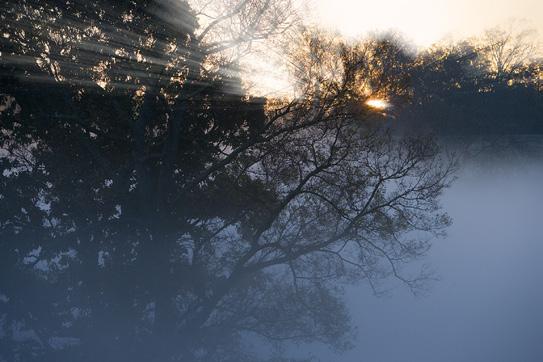
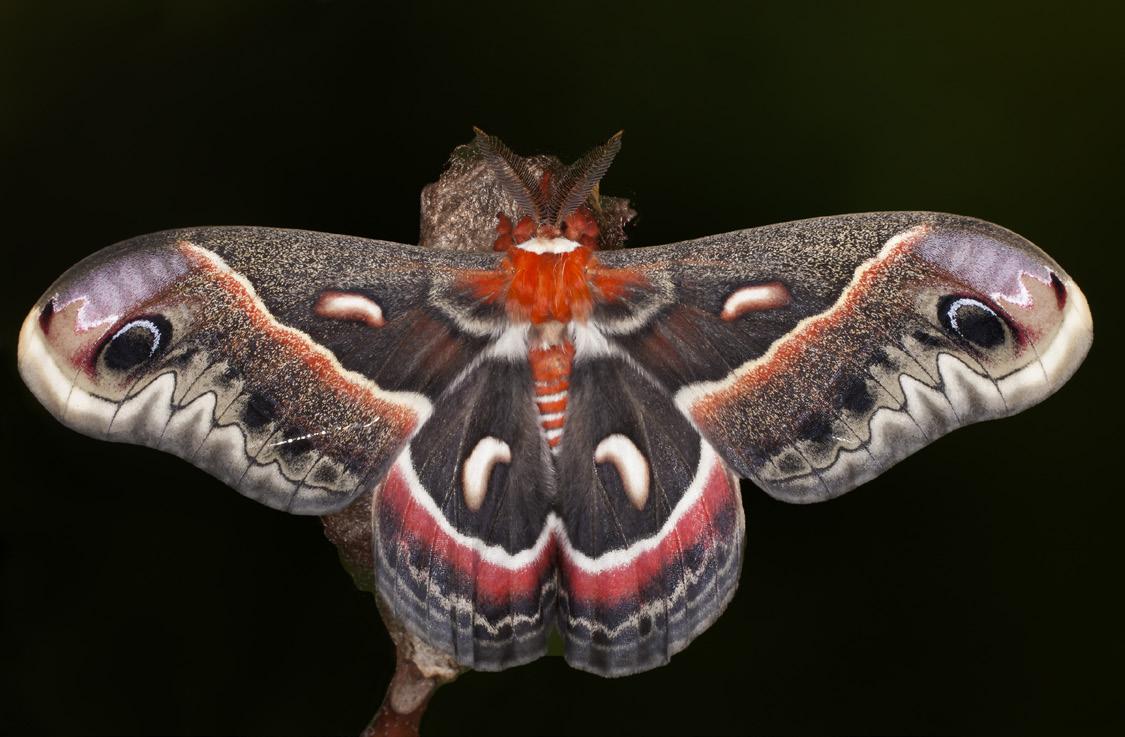

double decker bus in London, above, with a 1/2 second exposure.
In the picture at lower right, I used a 15 second exposure to smooth the water in Lake Wanaka in New Zealand. Again, this is a picture of something I didn’t see at all.
6. With long exposure times, a digital sensor can accumulate light to make a very dark scene visible. This is how astro photography is done. Pictures of the Milky Way as well as deep sky objects can only be studied and appreciated with exposures that can, in some instances, last hours. For the Milky Way shot I took in New Zealand on page 11, the exposure time was 15 seconds (I don’t exceed 20 seconds because the rotation of the Earth causes star trails to form). The brilliance of the Milky Way resulted from the long exposure as well as using the Adobe Camera Raw sliders in post-processing to artistic advantage. The lights and colors on the Church of the Good Shepherd came from cars in the parking lot in front of the church that illuminated the scene during the 15 second exposure.
I point out the fact that we often don’t capture what we see so you will mentally see subjects and scenes as the camera does, not as your eyes do. I’m convinced that understanding this is the biggest hurdle to surmount in learning to take outstanding images. §
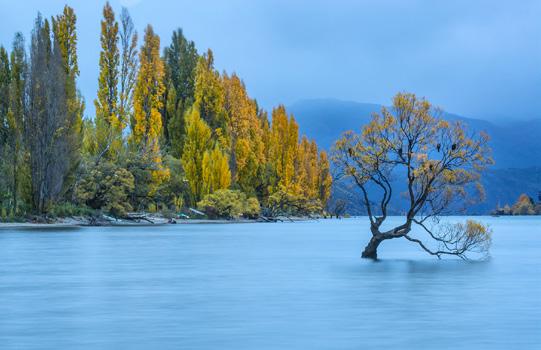
PERU PHOTO TOUR
Sept. 24 - Oct 4, 2021
